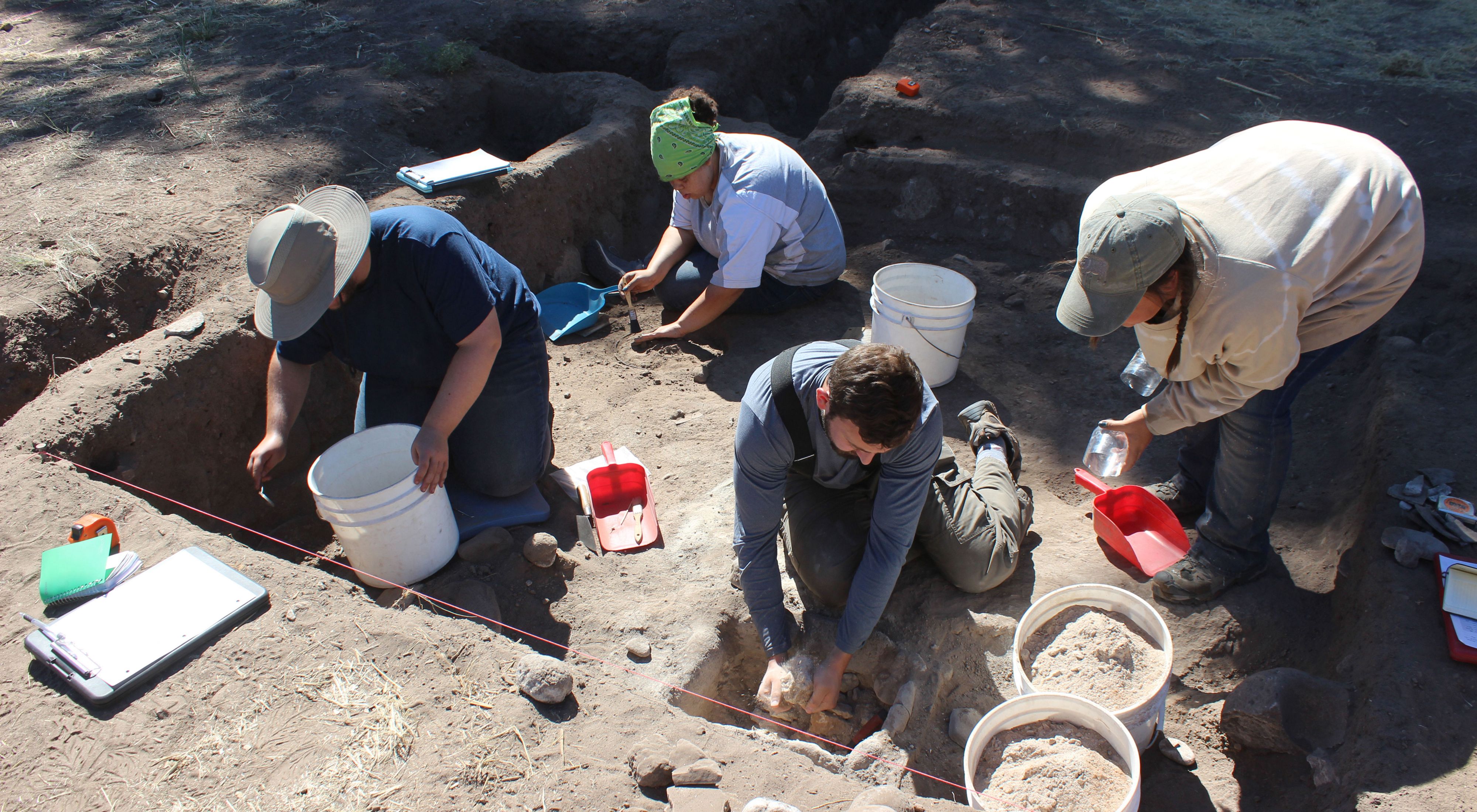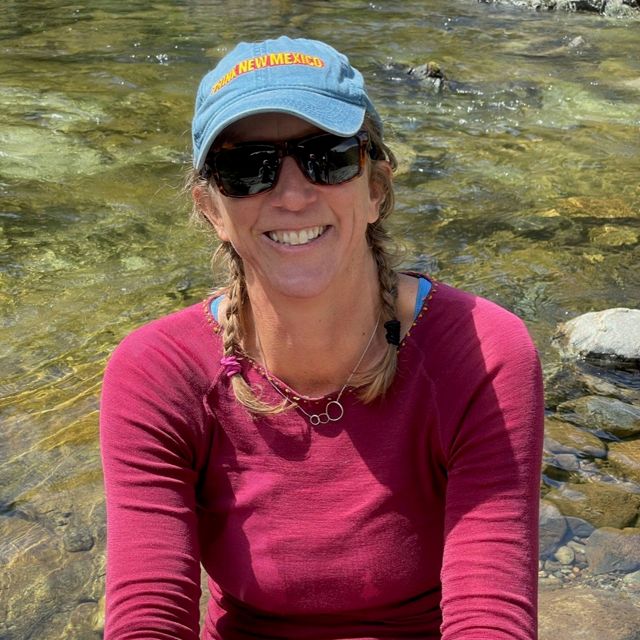Archaeology at the Gila River Preserve
An annual archaeological field school is uncovering a deeper understanding of the original stewards at Gila River Preserve.
Planning for a future where people and nature thrive can be informed by understanding how people historically interacted with one another and their local environment.
When students from Archaeology Southwest’s University of Arizona Preservation Archaeology field school returned to The Nature Conservancy’s Gila River Preserve for the fifth year, they surprised themselves and TNC staff with their findings.
“My frequent visits to the archaeological site were so fun,” says Martha Cooper, TNC’s Southwest New Mexico freshwater program director. “The students were excited to show me what they were uncovering as they excavated hearths, milling bins and elaborately painted pieces of pottery.”
The physical objects the students found revealed how people from different regions and cultures came to live together in the Cliff-Gila Valley of the Gila River between the late 1200s to the 1400s.
Intermixing of Cultures
Kayenta people moved in along the Gila from northeast Arizona during this period. Evidence suggests the Kayenta and Mogollon people first lived near one another, but after a generation lived with one another without evidence of significant conflict. This blending of traditions and people is known as Salado, a phenomenon specific to a period of migration in the southwestern United States. Differences between what people ate or the size of their homes don’t show up in the archaeological record at Salado sites, suggesting equality.
But cultural legacies do show up: cobbled floors typical of the Mimbres people and perforated plates from the Kayenta, milling bins from the north and smudged pots (blackened on the inside by fire) from the south. This year a spindle was found, made from a re-purposed piece of Mimbres pottery. Pots were made from local materials that incorporated methods from the Kayenta.
“Seeing the carefully painted pots and intricate patterns connects me across these many hundreds of years,” Cooper says. “All these clues help us understand how people retained and shared their cultural practices. I also think about how, whether at home or work, we can interact and coexist respectfully with different cultures.”
Uncovering the Past
It’s best to excavate when the soil is dry, so when the field school occurs in June, the crew starts their workdays in the cool, early mornings. They are eager to learn excavation skills and more about “old history.”
One reason they’ve returned to this site at the Gila River Preserve for five years: the size of the rooms in these dwellings is four times the size of rooms at other Salado sites (4 x 4 meters instead of 2 x 2). No one knows why. These are the kind of mysteries that prompt these folks out of bed at 5 a.m. to dig in the hot sun all day for six weeks.

Students work on excavating room blocks and walls, then report their findings at the end of each workday. This year, they looked at a grinding stone, checked out the cobble floor of what might have been a storage room and examined small mammal bones that were uncovered. It’s easy to see the appeal of careful digging and discovery and how entire stories emerge from the clues that are collected.
One student told Cooper how she values Archeology Southwest’s commitment to education and community involvement. She wonders what the value of uncovering artifacts and piecing together stories about people if they’re not shared with people today? These lessons from the past help shape our future.
Changing Environment
With this work, we all learn what plants and animals sustained people. Researchers are working to better understand people's historic reliance on wild versus domesticated foods. Field School Director Karen Schollmeyer and Steve McDonald, a local trapper-turned-biologist with the Museum of Southwestern Biology, recently published a paper about faunal remains in archaeology sites in the Gila and Mimbres River drainages.
At the site on the Farm, peccary (javelina) bones are not found, and yet they can be seen running around here now. Their range has expanded northward as the climate grows warmer. The findings also reveal that the range of the yellow-faced pocket gopher, now east of the Rio Grande, used to include southwest New Mexico.
“We have the opportunity, through studying remains and artifacts, to think both about how people migrated but also where wildlife lived then and now, and how they were traded,” Cooper said. “This information helps us understand how people and climate change are shifting the range of species and biodiversity within our region.”
The Salado site at the Gila River Preserve was occupied until the 1400s. In the 1970s, it was common to attribute people abandoning their homes primarily to environmental factors, like drought. But now it is more common to factor in social reasons as well—perhaps other stressors or just the knowledge that it was better somewhere else. After all, materials were moving around and being traded, and no doubt information was exchanged, too. With climate change and rapidly rising temperatures in the Southwest, this same phenomenon is occurring today.
Place and Identity
This year, the archaeology field school is expanding their knowledge of this Salado site and sharing what they learn, committed to preservation and uncovering a deeper understanding of the original inhabitants. This place, the Salado site at the Gila River Preserve, was important to the identity of people who lived here so long ago, but continues to shape the lives of students and researchers today.
“Being here has affirmed any notion I had about joining archaeology,” said Kathrine Taylor, a 2021 field school student. “There's been no greater experience than coming to understand what protecting these sites means, how we can learn from the land and respect these cultures.”

